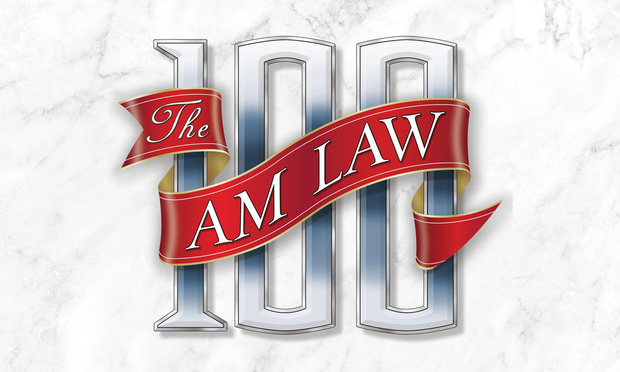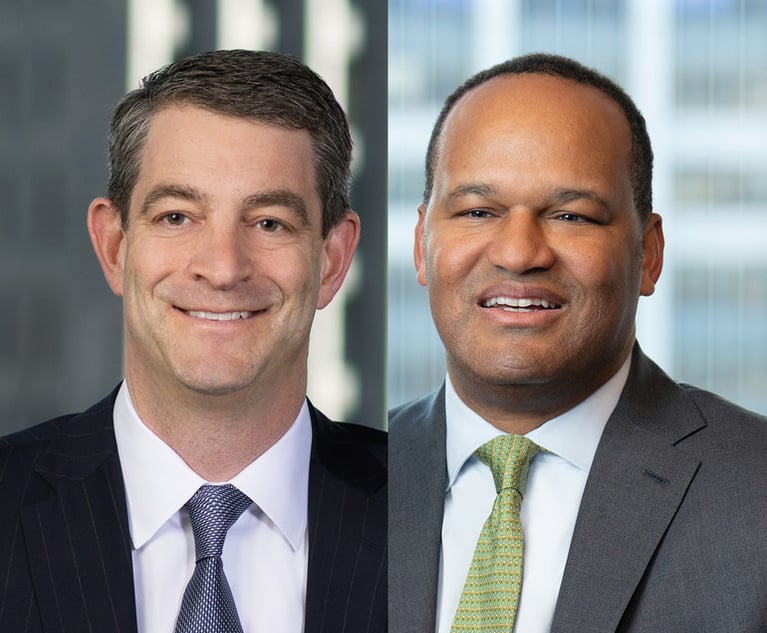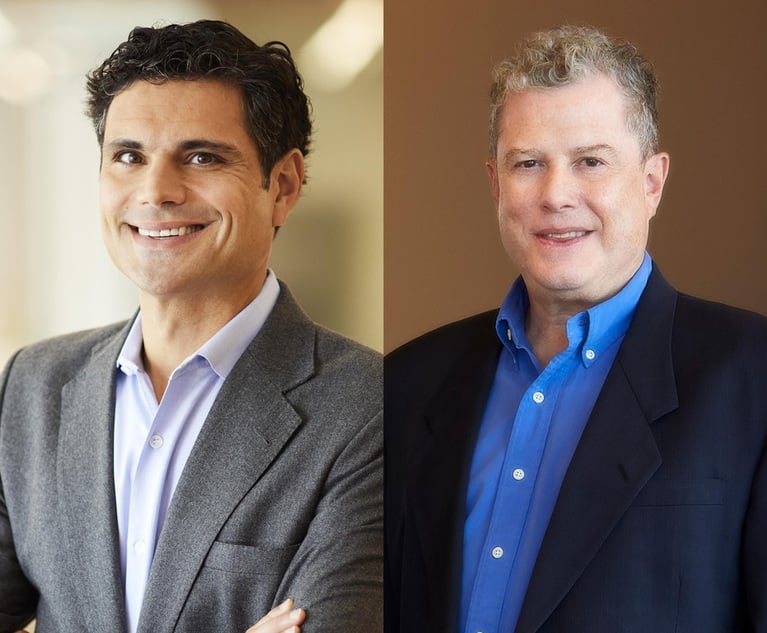These Firms Once Graced the Am Law 100. Where Did They Go?
Nearly 30 law firms have left the list since the turn of the century—some defunct, others subsumed by mergers or dropped into the Am Law 200.
April 26, 2019 at 02:32 PM
5 minute read

If, every year, the unveiling of the Am Law 100 provides many firms cause for celebration, for others, it's a time to lament. That's certainly the case for firms that were previously on the list and now find themselves on the outside looking in.
In 2019, that list included two firms, both based in Missouri: St. Louis' Husch Blackwell and Kansas City's Shook Hardy & Bacon. But a walk down memory lane offers roughly 30 other names—some defunct, others subsumed by mergers, some deemed ineligible and still others paddling along in the Am Law 200.
Here's a brief overview of which firms sit in these different categories since the turn of the millennium.
Am Law 200 Perennials
Partners at Husch Blackwell and Shook Hardy can take solace in one fact: The largest group of departures from the list features firms that have found a comfortable new home in the Am Law 200. Robins Kaplan and Kelley Drye & Warren last appeared in the Am Law 100 in 2001, but both firms have become staples in the Second Hundred. Other firms making the transition in the previous decade include Quarles & Brady, last seen in the Am Law 100 in 2002; Wiley Rein, departing after 2007; Buchanan Ingersoll & Rooney, which exited after 2008; and Stroock & Stroock & Lavan, gone since 2009.
This decade has seen Wilson Elser depart from this list after 2013; Finnegan leave after 2014; Bracewell move on after 2015; Hughes Hubbard & Reed retreat after 2016; and Pepper Hamilton leave after 2017.
Swallowed Whole
Another set of firms left the Am Law 100 as a direct consequence of merging or otherwise being subsumed by another law firm. Many of these firms were in good health prior to their mergers. Kaye Scholer left the list after 2015 following its merger with Arnold & Porter (the firms initially went by the combined name Arnold Porter Kaye Scholer, before reverting to Arnold & Porter). Edwards Wildman Palmer's last year on the list was 2014, prior to its merger with Locke Lord. In the previous decade, Gray Cary Ware & Freidenrich last appeared on the list in 2005 before becoming part of the newly formed DLA Piper. The last year for both Hale and Dorr, which became part of Wilmer, and Shaw Pittman, which merged into Pillsbury Winthrop, was 2004. And in 2001, Brown & Wood appeared on the list before merging with Sidley Austin.
Bingham McCutcheon, last seen on the list in 2015, is in a slightly different category. The financially flailing firm saw the vast majority of its partners and associates join Morgan, Lewis & Bockius, which also paid off its debt, but the transaction was not a formal merger.
Down and Then Out
For another group of firms, a departure from the Am Law 100 was a signal of further changes to come. After seeing their revenue shrink in relation to their peers, they found other firms to combine with, and the names that once graced the list are now out of service.
Swidler Berlin Shereff Friedman's final appearance in the Am Law 100 was in 2002; in 2006, the firm merged with Bingham McCutcheon. Preston Gates & Ellis last placed on the list in 2004; in 2007, it merged with Kirkpatrick & Lockhart to become K&L Gates.
Two firms born in the Southeast, Womble Carlyle Sandridge & Rice and Sutherland Asbill & Brennan, are worth treating together. Womble exited the list after 2009, and Sutherland Asbill after 2012. Since then, the former merged in 2017 with the U.K.'s Bond Dickinson to form Womble Bond Dickinson, while the latter found a trans-Atlantic partner that same year, becoming part of Eversheds Sutherland. Both firms are now ranked on the Legal Week U.K. Top 50, while Womble Bond is now on the Am Law 100 list, ranking 77 in 2019.
Dickstein Shapiro last appeared on the list in 2010. It soldiered on for six more years before the bulk of the firm was swallowed by Blank Rome. And Chadbourne & Parke's last year was 2012; it combined with Norton Rose Fulbright in 2017.
Implosions
Other firms crashed out of the Am Law 100 because they crumbled to pieces. The most recent example is Dewey & LeBoeuf, which sat 28th on the 2012 list. That same year, the firm's financial difficulties and indebtedness became public, it filed for bankruptcy and ceased operations.
Other names that vanished in a flash—or simply ceased operations within several years of last being named to the list—include Howrey, last seen in 2010, Heller Ehrman in 2008, Thelen in 2006, Jenkens & Gilchrist and Coudert Brothers in 2005, Brobeck, Phleger & Harrison and Testa, Hurwitz & Thibeault in 2002, and Arter & Hadden in 2001.
Reassigned
After Dentons was formed in 2012 following a three-way merger, the firm was part of the Am Law 100 until 2015. But that year's combination with Dacheng put the majority of its lawyers outside of the U.S.—the firm now only qualifies for the Global 100.
Clarification: An earlier version of this story failed to note that the newly formed Womble Bond Dickinson is now ranked in the Am Law 100.
This content has been archived. It is available through our partners, LexisNexis® and Bloomberg Law.
To view this content, please continue to their sites.
Not a Lexis Subscriber?
Subscribe Now
Not a Bloomberg Law Subscriber?
Subscribe Now
NOT FOR REPRINT
© 2025 ALM Global, LLC, All Rights Reserved. Request academic re-use from www.copyright.com. All other uses, submit a request to [email protected]. For more information visit Asset & Logo Licensing.
You Might Like
View All
'None of Us Like It': How Expedited Summer Associate Recruiting Affects Law Students and the Firms Hiring Them

Latham's Lateral Hiring Picks Up Steam, With Firm Adding Simpson Practice Head, Private Equity GC
3 minute read

Leaning Into ‘Core’ Strengths, Jenner’s Revenue Climbs 17%, Profits Soar 23%
4 minute readTrending Stories
- 1Data Breaches in UK Legal Sector Surge, According to ICO Data
- 2PayPal Faces New Round of Claims; This Time Alleging Its 'Honey' Browser Extension Cheated Consumers
- 3Fired NLRB Member Seeks Reinstatement, Challenges President's Removal Power
- 4NY Inspector General Announces Attorneys Hired to Lead Upstate Region and Gaming
- 5Carol-Lisa Phillips to Rise to Broward Chief Judge as Jack Tuter Weighs Next Move
Who Got The Work
J. Brugh Lower of Gibbons has entered an appearance for industrial equipment supplier Devco Corporation in a pending trademark infringement lawsuit. The suit, accusing the defendant of selling knock-off Graco products, was filed Dec. 18 in New Jersey District Court by Rivkin Radler on behalf of Graco Inc. and Graco Minnesota. The case, assigned to U.S. District Judge Zahid N. Quraishi, is 3:24-cv-11294, Graco Inc. et al v. Devco Corporation.
Who Got The Work
Rebecca Maller-Stein and Kent A. Yalowitz of Arnold & Porter Kaye Scholer have entered their appearances for Hanaco Venture Capital and its executives, Lior Prosor and David Frankel, in a pending securities lawsuit. The action, filed on Dec. 24 in New York Southern District Court by Zell, Aron & Co. on behalf of Goldeneye Advisors, accuses the defendants of negligently and fraudulently managing the plaintiff's $1 million investment. The case, assigned to U.S. District Judge Vernon S. Broderick, is 1:24-cv-09918, Goldeneye Advisors, LLC v. Hanaco Venture Capital, Ltd. et al.
Who Got The Work
Attorneys from A&O Shearman has stepped in as defense counsel for Toronto-Dominion Bank and other defendants in a pending securities class action. The suit, filed Dec. 11 in New York Southern District Court by Bleichmar Fonti & Auld, accuses the defendants of concealing the bank's 'pervasive' deficiencies in regards to its compliance with the Bank Secrecy Act and the quality of its anti-money laundering controls. The case, assigned to U.S. District Judge Arun Subramanian, is 1:24-cv-09445, Gonzalez v. The Toronto-Dominion Bank et al.
Who Got The Work
Crown Castle International, a Pennsylvania company providing shared communications infrastructure, has turned to Luke D. Wolf of Gordon Rees Scully Mansukhani to fend off a pending breach-of-contract lawsuit. The court action, filed Nov. 25 in Michigan Eastern District Court by Hooper Hathaway PC on behalf of The Town Residences LLC, accuses Crown Castle of failing to transfer approximately $30,000 in utility payments from T-Mobile in breach of a roof-top lease and assignment agreement. The case, assigned to U.S. District Judge Susan K. Declercq, is 2:24-cv-13131, The Town Residences LLC v. T-Mobile US, Inc. et al.
Who Got The Work
Wilfred P. Coronato and Daniel M. Schwartz of McCarter & English have stepped in as defense counsel to Electrolux Home Products Inc. in a pending product liability lawsuit. The court action, filed Nov. 26 in New York Eastern District Court by Poulos Lopiccolo PC and Nagel Rice LLP on behalf of David Stern, alleges that the defendant's refrigerators’ drawers and shelving repeatedly break and fall apart within months after purchase. The case, assigned to U.S. District Judge Joan M. Azrack, is 2:24-cv-08204, Stern v. Electrolux Home Products, Inc.
Featured Firms
Law Offices of Gary Martin Hays & Associates, P.C.
(470) 294-1674
Law Offices of Mark E. Salomone
(857) 444-6468
Smith & Hassler
(713) 739-1250










